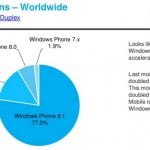
Netgear on Monday announced the Orbi WiFi System, designed to eliminate dead spots in smart homes.
Orbi’s system “is similar to using a network extender, but Netgear has improved on this approach with a dedicated band for communication with the satellite devices,” explained Bill Ablondi, a research director at Strategy Analytics.
An Orbi WiFi system consisting of one router and one satellite can cover a home of up to 4,000 square feet in area, Netgear said.
The initial Orbi system will be available in September for US$400. Netgear’s future plans include offering kits with more satellites for larger homes, as well as satellite add-ons for the Orbi system. Each satellite provides up to 2,000 square feet of coverage.
“Orbi is part of a new wave of WiFi systems that tackle two problems: range and ease-of-installation, compared to typical WiFi extenders,” said Jonathan Gaw, a research manager at IDC.
This new wave has “a lot of promise to boost a previously moribund market that has been commodified by low-cost Chinese players, by moving emphasis from speeds and feeds to ease of use, new applications and range,” he told TechNewsWorld.
Other large home network vendors will offer their versions of these systems before year end, Gaw predicted. “There will be robust competition in these systems soon.”
Orbi Tech Specs
The Orbi system has a dedicated backhaul quad stream 1.7-Gbps 5-GHz band for connecting its router and satellites. It has a single WiFi network name, or SSID, for the entire network, covering both 2.4-GHz and 5-GHz WiFi bands. It offers 802.11ac AC3000 WiFi speeds of up to 3 Gbps.
The router and the satellite both have four Gigabit Ethernet ports and one USB 2.0 port.
The Orbi system features IPv6, dynamic DNS, port forwarding, parental controls and access point mode.
“Basically this is a large home WiFi do-it-yourself solution that pretty much looks plug-and-play, and far easier than what you’d typically go through with multiple routers, some configured as extenders,” said Rob Enderle, principal analyst at the Enderle Group.
“However, regular range extenders have gotten a lot easier of late,” he told TechNewsWorld. “I just started using the new Linksys Max-Stream AC1900, and the one-button setup actually worked for once.”
Keeping Users Safe
The Orbi system offers advanced WiFi security with automated updates, WPS-protected setup, 64/128 bit WEP, WPA/WPA 2 PSK and WPA/WPA-2 Enterprise.
Security is a critical issue for many consumers, and some are willing to pay extra for it.
More than 20 percent of respondents to a recent Strategy Analytics survey of U.S. households indicated they were “interested in and willing to pay for improved network security services,” Ablondi told TechNewsWorld.
“Brands like Netgear can help assuage some security concerns,” IDC’s Gaw observed.
Taking On the Competition
Orbi is the only system to leverage Tri-band WiFi, according to Netgear. However, Tri-band WiFi is a feature of other manufacturers’ products, including the D-Link Unifed Home WiFi Network Kit, the Asus RT-AC3200 and the TP-Link AC3200.
The Orbi already could be obsolete, suggested Enderle.
The AC1900 — the one he uses — “is a MU-MIMO router which provides a massive increase in potential bandwidth — and the Orbi isn’t,” he pointed out.
“NetGear has a pretty good reputation, though, and they are big enough to afford advertising, so we’ll see how this works out,” Enderle said. “Personally, I’d likely wait for a solution that supported MU-MIMO.”
Other systems already in the market include the Eero and the Luma, which Amazon reportedly plans to integrate with the Alexa software at the heart of its Echo speaker and other voice recognition products.
“Don’t forget OnHub from Google,” Strategy Analytics’ Ablondi said — but “Netgear has a great reputation in the networking market and robust distribution channels, so I give it a high probability of success.”
An estimated 27- 28 million homes in the U.S. have some type of smart home device, he noted, adding that his firm expects U.S. consumer spending on smart home devices to reach nearly $28 billion this year, up 18 percent from 2015.
[Source: Technewsworld]










